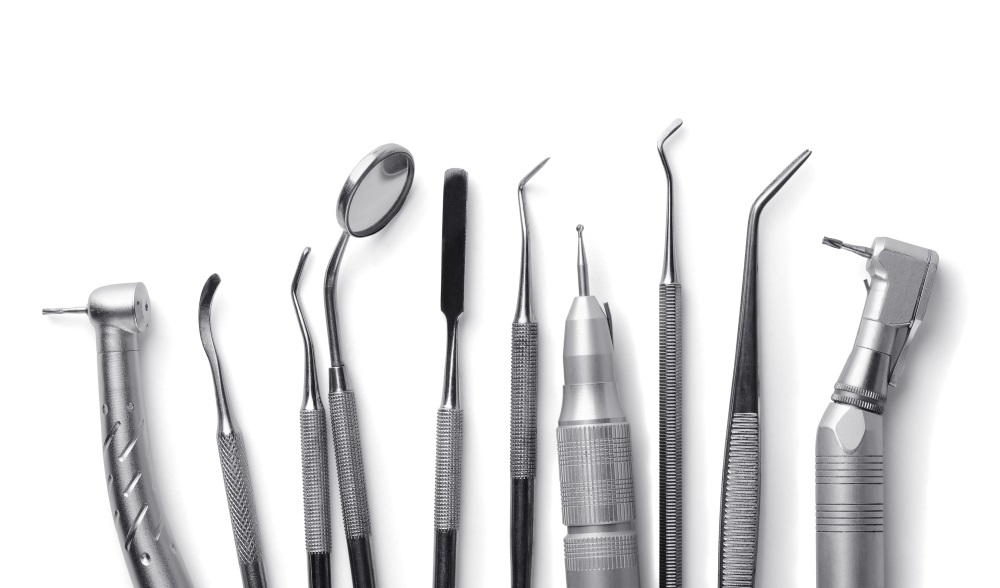Where Did Today’s Dental Tools Come From?
We know that dental anxiety is real. For nearly 10% of adults, going to the dentist it is so fear-inducing that they refuse to go at all. Almost 20% of patients only go to the dentist for urgent situations. While going at all is a good first step, waiting until a problem becomes an emergency can result in higher costs and far worse outcomes.

While many patients fear the pain associated with a trip to the dentists, experts believe that the fear is triggered by the loss of control felt in the dental chair and the lack of knowledge of what’s going with the treatments and tools used. When the dentist is hovering over you and you lose your ability to speak, many people feel anxiety take over.
Research has also shown that humans are programmed to protect their airways—and this includes the mouth and nose. And so, a natural response to having a dentist in close proximity to those areas can bring a big wave of fear.
One way we want to help ease the mind of Dr. Ku’s patients is to let you peak behind the curtain and learn more about the instruments we use. If you ever have any additional questions for your dentist, always feel free to ask!
Brief history of the first dental tools
If you have any anxiety about visiting the dentist, you should be glad you aren’t living in olden times when instruments were downright barbaric.
One of the earliest dental tools used was a drill. The first dental drill appeared in 7000 BC and was an invention of the Indus Valley Civilization. It was actually a bow drill, and it’s believed that it was operated by skilled bead craftsmen, because its main use was the production of beads and jewelry.
Fast forward to the 19th century when the clockwork dental drill was invented in 1864 by British dentist George Fellows Harrington. Unfortunately, this drill was difficult to control and deafeningly loud.
Moving to today’s dental tools
From instruments that were so loud that patients had to cover their ears to drills powered by pump, today’s dental technology has evolved significantly. These days your dentist will use tools that not only make dental procedures less painful, but more effective and faster than ever.
For example, today dentists no longer have to rely on a drill. Instead, many use an air abrasion tool. This type of drill can remove plaque and debris, open up and clean out cavities, and help to smooth over rough spots in a chipped tooth. Because the tool uses air—plus tiny bits of aluminum oxide—to do the abrasive drilling work, the procedures aren’t so uncomfortable or noisy as older drilling techniques.
One tool that probably doesn’t evoke too much concern is the two-sided mirror. The mouth mirror is a small mirror attached to a metal stick. The purpose of this instrument is two-fold:
- First, it allows the dentist to view places in the mouth that ordinarily would take an act of gymnastic physical contortion to see. This makes it easier to find tooth decay and other potential oral problems that would otherwise go undetected.
- Second, it gives the dentist an easy way to move your tongue or push on the inside of your cheek.
The sickle probe is one of the scarier-looking tools on the dentist’s tray, what with its sharp, metal hook. It’s primarily used to explore the pockets between teeth and to scrape away tartar and plaque.
The suction device is one of the funnier, if not awkward, tools at the dentist’s office. Some children express fear that it can suck their tongue off or get stuck in their cheek. However, many adults appreciate its purpose for eliminating excess saliva. This instrument allows the dentist to have a dry surface to work on, and keeps you comfortable without saliva building in the back of your mouth.
Finally, a dental syringe is probably the last thing you want to see awaiting you at your appointment. They’re a bit longer than a typical needle or syringe so the dentist can hit any necessary spots toward the back of the mouth when administering the anesthetic. As with any shot, the initial injection may cause discomfort for a moment, but is quickly numbed by the anesthetic.
If you ever have any questions about anything your see, always ask! We are happy to explain and teach you about the dental instruments that will be used at your appointment.





